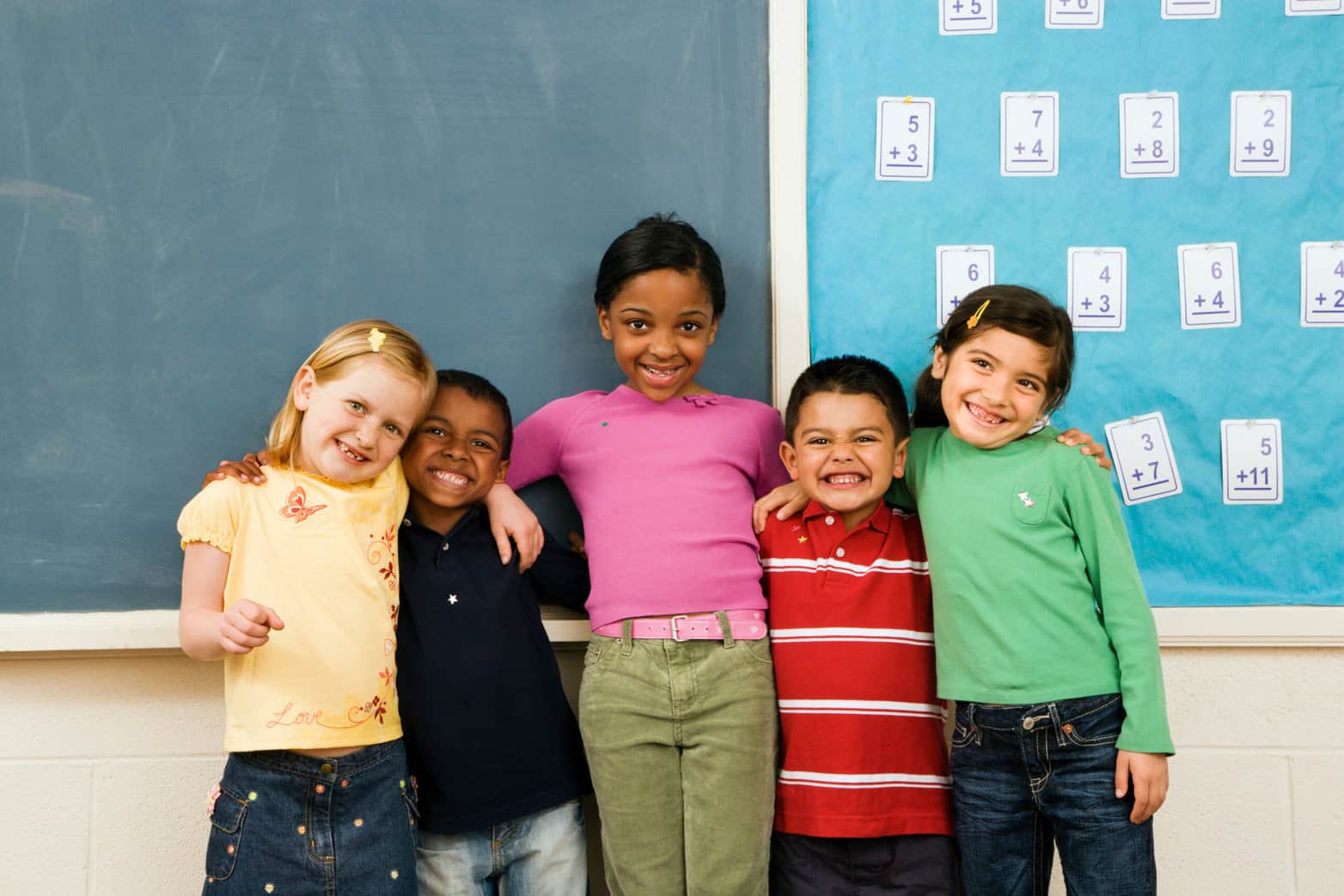3 concepts that can help instruction to be culturally responsive
For years, I prided myself on making sure my students could see themselves in my lessons. I worked hard to provide them with culturally relevant text that was richly diverse, and I introduced them to diverse perspectives that made them culturally competent citizens. Except for…math. For that 90 minutes during my day, I would push the pause button on any culturally relevant pedagogy and just teach math.
One day while reflecting on my lesson with my principal, he asked me simply what I could do to make my math instruction as culturally relevant as my other lessons. I sat and wondered to myself, “Should I just write math tasks that involve Chinese noodles? For example: If 13 people were equally sharing 56 pounds of Chinese noodles, how many pounds were left on the plate?” It was time for the STOP button this time, not the pause button. There had to be more than using noodles and ethnic foods to make my math tasks and lessons culturally relevant. If I was willing to scaffold lessons and provide culturally relevant background knowledge in all the other subjects that I taught, why wouldn’t I do the same thing for math?
This revelation not only transformed my thinking but also the thinking of my students. I read posts, conferred with our ELL teacher in our school, and collaborated with trusted colleagues. What I found did not only revolutionize my teaching; it also revolutionized my students’ learning, and the results were amazing. Students began to take risks, their confidence in math began to grow, and my students became math thinkers willing to stretch their thinking beyond what they ever imagined.
Does your math class need to be culturally responsive to your students? YES! Here are three things that have helped me ensure my math instruction not only allows students to grapple and conquer math concepts but also maintains equity in my classroom: 1) attending to cultural background and language, 2) becoming contextual thinkers, and 3) embracing the great mistake. Here is how I did it—and it does NOT involve tasks about noodles!
Attending to Cultural Background and Language
Every student in your room comes with a distinct identity. This identity includes not only their language but also their experiences, education, tradition, and any factors that give them a sense of belonging. Teachers often build backgrounds in science, social studies, and especially with text. However, we don’t often think that this is something that has to be done in math. As educators, we may not take the time to realize students need the same language attention in math as they do in other content areas. I was guilty, as well, of just handing students a task for them to complete and focusing more on the problem-solving process.
For a student to be successful with the task, however, it is important to look at the task through the lenses of culture and language. Taking time to plan this perspective is just as important as every other part of your lesson plan. Such intentional planning is one of the cornerstones of success with Math Milestones™. It does take time on the front end, but spending time with each task prior to teaching it will allow you to look for areas that students might need help with, be it language or cultural differences. For example, you can look for cognates that might relate words to their language, items/actions that pertain to only a certain culture, multiple meaning words, and/or any Tier 2 or Tier 3 words.
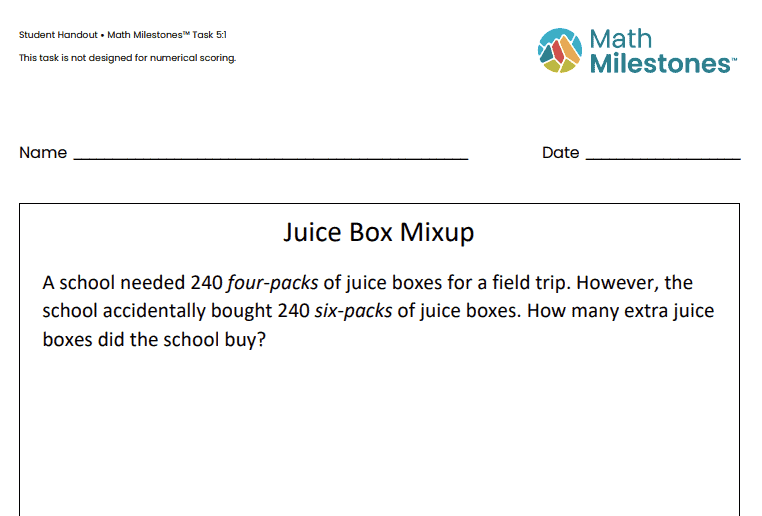
When looking at the Math Milestones™ task 5:1 Juice Box Mixup, I identified many things that had to be addressed with my students so they could successfully solve the math task. We spent time together making our anchor chart. By attending to the students’ language and cultural needs, you are not only providing the student with the scaffolding needed to be successful, but you also are making sure that the productive struggle is within problem solving and not reading in a second language. Teachers must be intentional and teach vocabulary and even Tier 1 words that might hinder success in math. Again…the key word there is “intentional.”
As a teacher, I must look at whatever task my students are given and provide language scaffolding and support. By taking time to make anchor charts like the one in the picture below, I can provide my students with a reference to be able to unpack the task in a manner where the language does not interrupt the understanding and application of their math reasoning. I have found that this not only supports my ELLs but also my students with IEPs and even my economically disadvantaged students. This attention to language is a priority of the Math Milestones™ tasks and makes them such a rich addition to my math lessons.
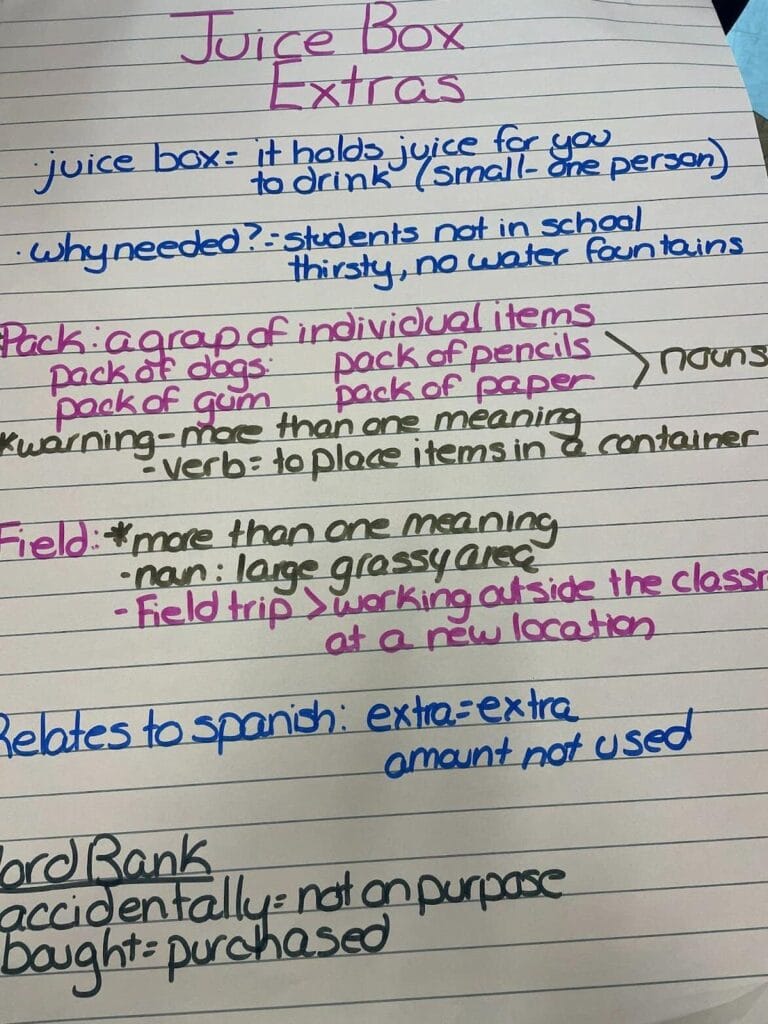
Becoming Contextual Thinkers
Providing rich math tasks and thinking that directly relate to the students’ everyday lives allows them to become contextual thinkers. Keeping math tasks away from the abstract and rooted instead in everyday, real-life experiences allows students to make both connections and sense of the word problem. So many times, I take the numbers out of the problem. We focus on the situation, the language, the context. The Math Milestones™ tasks tell a story that encourages students to not only solve fluently but also to think deeply. With each Math Milestones™ task, we replace complex numbers with what we call “easy numbers” so students can focus on the context of the problem instead of being distracted by decimals, uncommon denominators, or seemingly scary large numbers.
If students are given a chance to just focus on the context of the problem, then they are able to transfer it to other problem-solving situations. This also is a time for them to apply the support that was provided while we were building cultural connections and attending to language. It is like we draw back the beautiful curtains so we can first see clearly what is outside the window. The Math Milestones™ tasks are rooted in real-world contexts that make this process very easy for a student. Here is an example of a student rewriting the problem with easy numbers to focus on the context of the Math Milestones™ task.
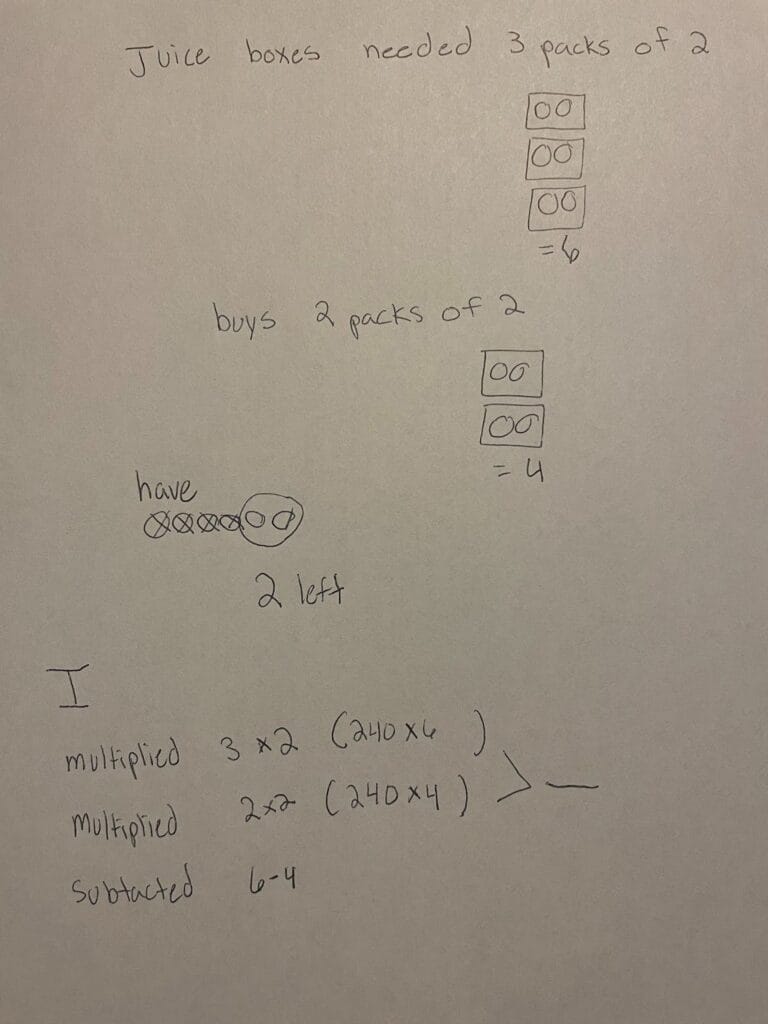
Embracing the Great Mistake
Sometimes, I have found it is hard for students to feel comfortable taking a risk in math. They are scared of the “wrong answer.” In my classroom, we embrace the wrong answer. We call them “great mistakes.” Even when we are in groups having academic conversations, or even during group time, my students will often share: “My great mistake was…” This time of self correction has more than one purpose. First, it shifts their thinking away from mistakes being something they did wrong and towards a positive experience that helps them grow as a mathematical thinker. Second, it allows them to feel safe making mistakes, which ultimately leads them to attempt to solve problems in multiple manners. Third, it provides feedback to me as a teacher of exactly where my student is struggling. Is it language? Fluency? Struggle with the standard? Being able to have my student reflect on their great mistake allows me to pinpoint exactly where they need some advancing steps and additional support.
You can see from the example below that my students not only speak great mistakes but also write great mistakes. We often look at problems and list great mistakes that someone might make while solving a problem. What is the value of this practice? Students gain insights into common misconceptions and can dive deeper with their understanding of the problem. This is where Math Milestones™ shines. Rather than each mistake viewed with a negative lens, it is looked at as a possible asset. How can we use this thinking to advance the student in their learning? This type of reflection benefits not only the student but also the teacher, who is given benchmarks for reflection as well as advancement. The math becomes more than numbers and an answer that is simply right or wrong. In Math Milestones™, each student is progressing along a learning continuum—but might just be at a different spot.
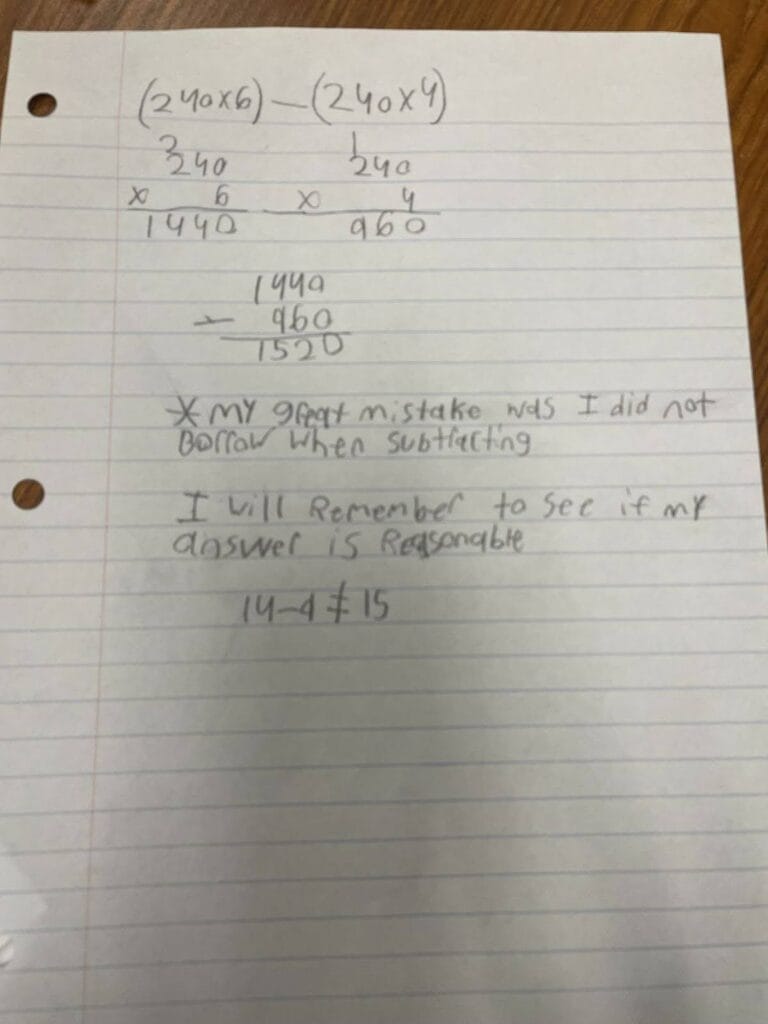
So, can my task be about juice boxes (and not boxes of Chinese noodles) and still be culturally responsive and equitable to my diverse students? Absolutely. You see, relating to cultures is not always writing a word problem about noodles or fish and chips. It is about leveling the playing field for all of my students. It is about recognizing where my students are coming from and attending to those needs and differences. It is not about noodles. It is about making math relatable and accessible for all.



